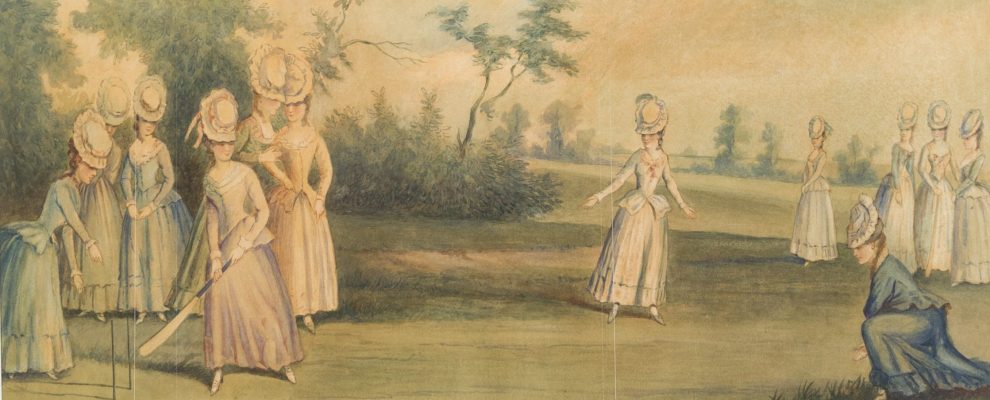Cricket as a large-scale spectator sport was essentially a creation of the eighteenth century. Between the 1720s and the 1780s the popularity of both playing and watching cricket greatly increased, and the game spread from its heartland in south-eastern England to become a truly national pastime: the first record of a cricket match in Yorkshire, for example, dates from 1751. Prominent local cricket clubs which came to have an important influence on the development of the game during the first half of the century included those at Slindon, Bromley and Chertsey and, most prominently, the Hambledon Cricket Club in Hampshire which became the leading cricketing venue from the 1750s to the 1780s.
Cricket was unlike almost any other spectator sport in the period in that it brought players together across the boundaries of social class: both the gentry and common people took part. Cricket matches usually took place on common land, village greens or open moor, and were thus open to common view, often attracting large and unruly crowds. In London the development of permanent cricket fields at the Artillery Ground in Finsbury and later Lord’s Cricket Ground gave the game a more formalised character and signified the growing respectability of cricket. The foundation of the Marylebone Cricket Club at Lord’s in 1787 and its custodianship of the Laws of Cricket (established in 1744 and extensively revised in 1774) signified a new concern with regulation and marked the establishment of a governing authority over the game.
Whilst cricket sometimes received generous support of noble patrons, who financed teams and matches, a central element in its growth and increasing appeal was gambling. By the 1770s the most popular cricket matches would see thousands of pounds being placed in bets and there were regular betting scandals involving bribed players and fixed games.
Cricket also afforded spectators the opportunity to enjoy refreshments, particularly drink. This often resulted in violence and disorder, as one commentator describing a match at the Artillery Ground in 1774 noted: ‘This sport has too long been perverted from diversion and innocent pastime to excessive gaming and public dissipation’. As early as 1744 the Artillery Ground had attempted to remedy such raucousness by installing seating on benches for eight hundred spectators and increasing the admission price from 2d to 6d. The intention was clearly to limit the size of the crowd and raise its social tone – something which appears to have been effective, as match spectatorship shrank from between seven and eight thousand to just two hundred.

Name: Fairfax House
Source: In Pursuit of Pleasure: Entertaining Georgian Polite Society (Fairfax House, 2016)
